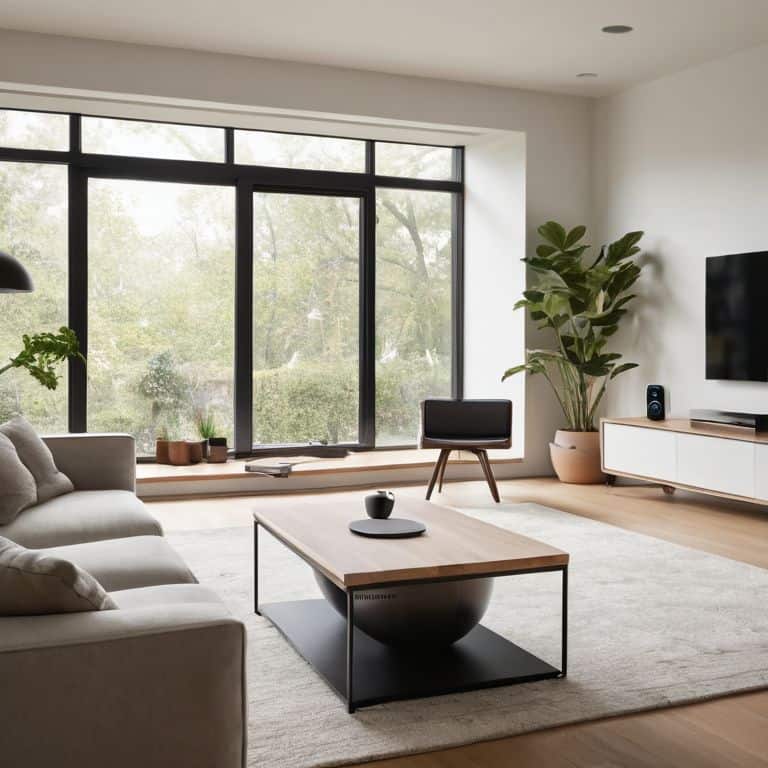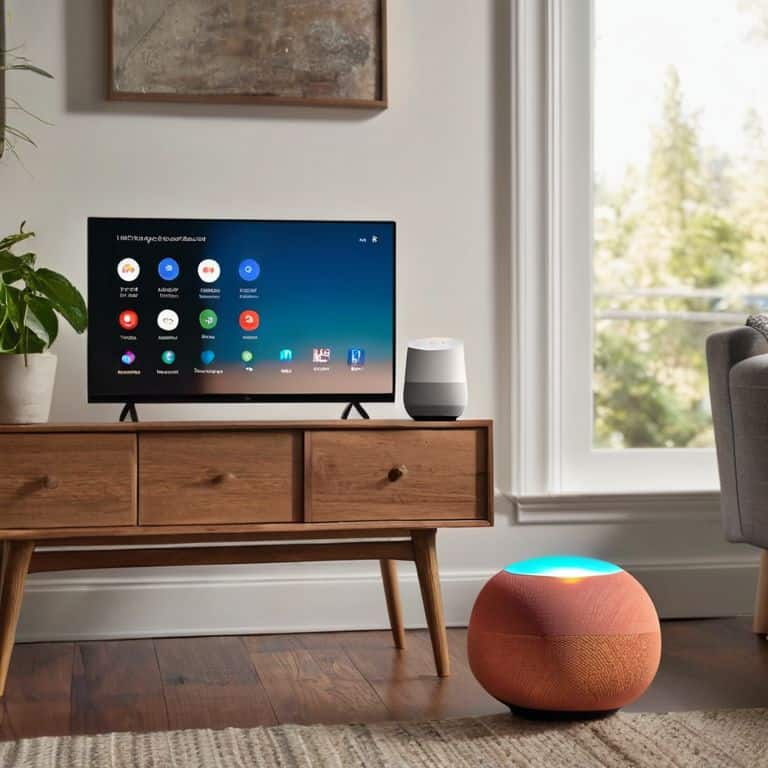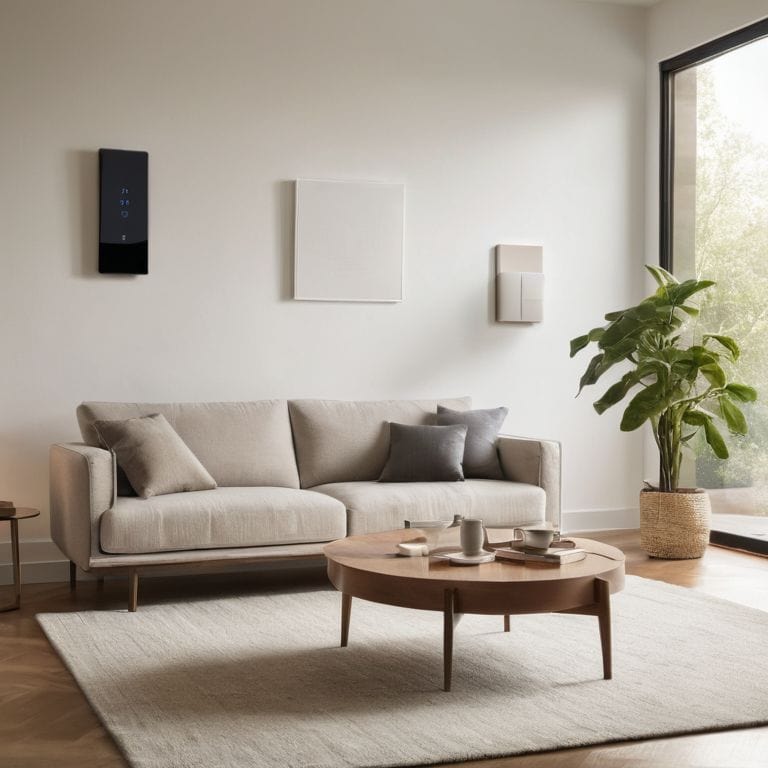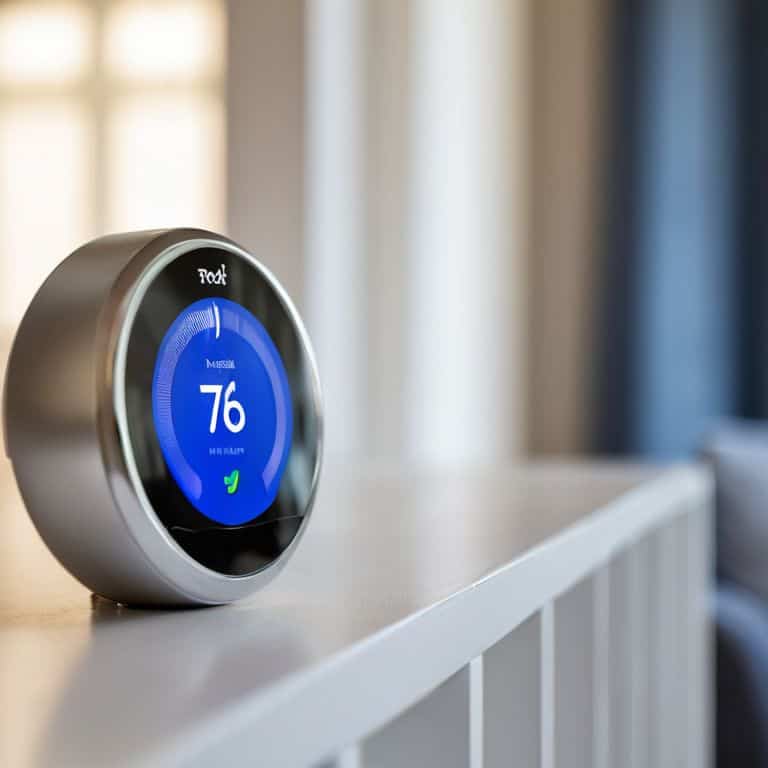I still remember the day I decided to turn my apartment into a smart home haven. I was excited to explore the world of automation, but soon found myself overwhelmed by the endless options. The apple homekit vs google home debate was particularly daunting – which one would be the best fit for my space? As someone who’s passionate about creating a home that’s not just beautiful, but also functional, I knew I had to dive deeper. I started researching, reading reviews, and watching tutorials, but it wasn’t until I started experimenting with both systems that I truly understood their strengths and weaknesses.
As an interior designer, I’ve learned that it’s all about finding the perfect balance between form and function. In this article, I’ll share my hands-on experience with apple homekit vs google home, giving you the lowdown on what works and what doesn’t. I’ll cut through the hype and provide you with practical advice on how to choose the best system for your unique needs and style. Whether you’re a tech-savvy enthusiast or a design newbie, I’ll guide you through the process of creating a smart home that’s not just sleek and modern, but also truly yours.
Table of Contents
Apple HomeKit

Apple HomeKit is a smart home system that allows users to control and automate various devices in their home using their iPhone or iPad, with its core mechanism relying on a hub-like structure to connect and manage devices. The main selling point of Apple HomeKit is its seamless integration with other Apple devices and its emphasis on security and privacy, making it an attractive option for those already invested in the Apple ecosystem.
For me, the real benefit of Apple HomeKit lies in its ability to create a cohesive and intuitive smart home experience, where I can control my lights, thermostat, and security cameras all from one place. I’ve found that having this level of control over my home’s ambiance and systems has really allowed me to unwind and relax in my own space, and I think that’s something everyone deserves to experience.
Google Home

Google Home is a smart speaker system that uses Google Assistant to control and automate various devices in the home, with its core mechanism relying on voice commands to execute tasks and provide information. The main selling point of Google Home is its versatility and compatibility with a wide range of devices and platforms, making it a great option for those who want a more open and flexible smart home system.
What I love about Google Home is its ability to learn and adapt to my daily routines and preferences, providing me with personalized recommendations and reminders that make my life easier. Whether it’s playing my favorite music or controlling the lights in my living room, Google Home has become an integral part of my daily life, and I think it could do the same for you.
Head-to-Head Comparison: Apple HomeKit vs Google Home
| Feature | Apple HomeKit | Google Home |
|---|---|---|
| Price | Variable, $99-$299 | Variable, $29-$149 |
| Key Feature | Seamless integration with Apple devices | Google Assistant voice control |
| Best For | Apple ecosystem users | Android and Google service users |
| Compatibility | iOS, iPadOS, watchOS, macOS | Android, iOS, Google devices |
| Security | End-to-end encryption, secure authentication | Google's 2-step verification, device-level encryption |
| Smart Home Devices Support | Over 600 devices from 130 brands | Over 10,000 devices from 1,000 brands |
| Voice Assistant | Siri | Google Assistant |
Apple Homekit vs Google Home

When it comes to creating a smart home, seamless integration is key. That’s why the debate between Apple HomeKit and Google Home is so crucial – it can make or break the ambiance and functionality of your space. As someone who’s passionate about making high-end design trends accessible, I believe that understanding the differences between these two systems is essential for bringing your vision to life.
In terms of compatibility, Apple HomeKit and Google Home have distinct approaches. Apple HomeKit is known for its _exclusive_ partnerships with specific brands, which can limit your options but also ensure a high level of quality. On the other hand, Google Home has a more _open_ approach, allowing it to integrate with a wider range of devices. This flexibility can be a major advantage, but it also means that you’ll need to do more research to ensure that your devices are compatible.
When it comes to user experience, Apple HomeKit and Google Home also have different strengths. Apple HomeKit is renowned for its _intuitive_ interface, making it easy to control your smart devices with Siri voice commands. Google Home, on the other hand, has a more _conversational_ approach, allowing you to ask follow-up questions and receive more detailed responses. After careful consideration, I’d say that Apple HomeKit takes the lead in this category due to its _streamlined_ setup process and seamless interactions.
My Top 3 Takeaways: Bringing Your Space to Life with Smart Home Systems
Whether you choose Apple HomeKit or Google Home, the key to a harmonious smart home is selecting a system that seamlessly integrates with your existing devices and decor, allowing you to focus on what truly matters – making your space a reflection of you
Both Apple HomeKit and Google Home offer unique features that can elevate your living space, from voice control to automated lighting, but it’s essential to consider your personal style and needs before making a decision, ensuring your smart home system is not just functional, but a beautiful extension of your home’s aesthetic
Ultimately, the decision between Apple HomeKit and Google Home comes down to your individual preferences and the devices you already use, but with either choice, you’ll be well on your way to creating a stylish, high-tech haven that’s perfectly you, and that’s what making a house a home is all about
My Take on the Ultimate Smart Home Showdown
The choice between Apple HomeKit and Google Home isn’t just about which smart home system reigns supreme – it’s about which one will be the perfect harmony to your unique rhythm, the missing puzzle piece that makes your space truly feel like home.
Isabelle Hart
The Final Verdict: Which Should You Choose?
After diving into the world of Apple HomeKit and Google Home, it’s clear that both systems have their unique strengths and weaknesses. Seamless integration is a key factor to consider, with Apple HomeKit offering a more streamlined experience for those already invested in the Apple ecosystem. On the other hand, Google Home’s compatibility with multiple platforms makes it a more versatile option for those with a mix of devices. Ultimately, the choice between these two smart home systems will depend on your individual needs and preferences.
So, who comes out on top? For me, the overall winner is Apple HomeKit, thanks to its ease of use and robust security features. However, I’d recommend Google Home to users who value cross-platform compatibility and are looking for a more affordable option. If you’re an Apple devotee who prioritizes a sleek, integrated experience, Apple HomeKit is the way to go. But if you’re a budget-conscious user with a mix of devices, Google Home is still a great choice that won’t break the bank.
Frequently Asked Questions
What are the key differences in compatibility between Apple HomeKit and Google Home when it comes to integrating various smart devices?
So, let’s dive into compatibility – a major key to a seamless smart home experience. Apple HomeKit and Google Home have different strengths here. HomeKit is all about exclusive integration with Apple devices, while Google Home plays nice with a wider range of devices, including those from other brands. Think about the devices you already own and which ecosystem they fit into!
Can I use Apple HomeKit and Google Home together in the same house, or are they mutually exclusive?
While they’re two separate systems, you can totally use Apple HomeKit and Google Home together in the same house. Think of them as complementary tools to enhance your space – just be mindful of compatibility and control consistency. I do it in my own home, and it’s a total game-changer!
How do Apple HomeKit and Google Home compare in terms of security features and protecting my personal data?
When it comes to security, both Apple HomeKit and Google Home have their strengths. Apple’s focus on end-to-end encryption and strict app approval process gives me peace of mind, while Google Home’s regular software updates and two-factor authentication are also major pluses.



